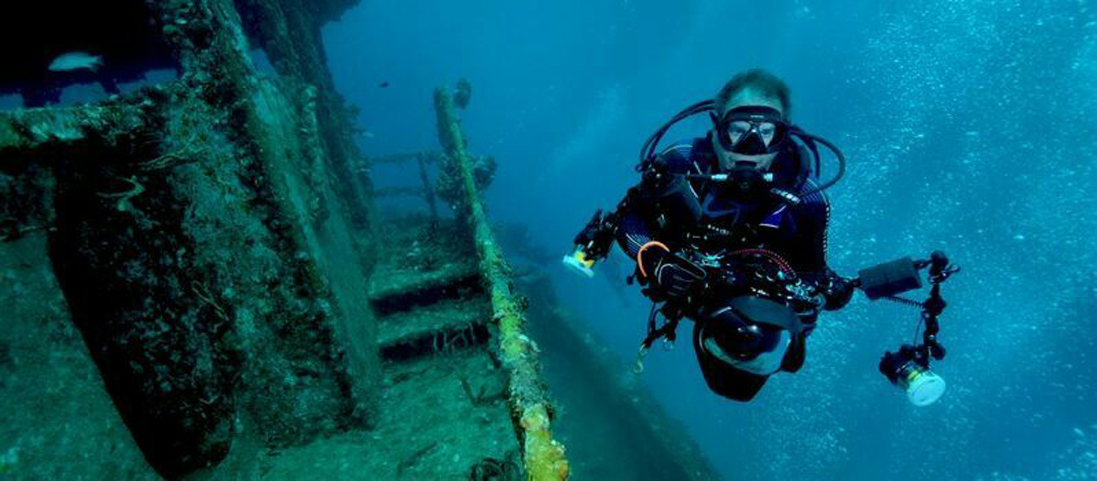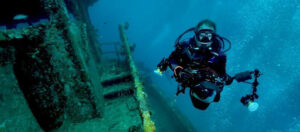The plane’s engines were in their familiar rumbling idle mode. Inside the cabin, the loud hiss of air flowing out of the vents masked the quiet of the passengers as they sat restlessly in their seats. Outside, the sun was shining, the wind was calm and the temperatures mild. By all accounts, a beautiful day for flying. Our first destination was Charlotte, North Carolina, through which we’d be making a connection to Palm Beach, Florida, and a quick check on our phones of the weather in Charlotte showed similar conditions.

Words and Photos by Michael Salvarezza and Christopher P. Weaver
SO WHY WEREN’T WE MOVING?
After 40 minutes of sitting still, the pilot finally made a brief but vague announcement about how we needed to allow some incoming traffic to pass before we could take off.
What?
For us, our anxiety level was climbing. We were scheduled on a connecting flight out of Charlotte down to Palm Beach, Florida and we were now in jeopardy of missing that plane. That would be a problem.
You see, we had been planning this trip for a while. We had a date with Lady Luck and we didn’t want to miss it!
We’ve all been there. Stressed out over flight delays, tight connections and trip itineraries jeopardized. After arriving in Charlotte however, and sprinting from one terminal to another, we did make our connection with just a few moments to spare and we eventually arrived in Palm Beach on time. By the next morning, we were on board the Black Pearl, a dive boat operated by South Florida Diving Headquarters in Pompano Beach, and headed out of the Hillsboro Inlet towards the wreck of the Lady Luck. The Hillsboro Lighthouse winked as we went past, perhaps wishing us well on our journey.

Lady Luck was built in 1967 as the Newtown Creek by the Wiley Manufacturing Company and she operated as a sludge tanker for nearly half a century. She moved 1.2 million gallons of sludge a day from New York sewage plants lacking dewatering facilities to ones that had watering capabilities so that the sludge could be converted into fertilizer pellets.
Not a very glamourous life!
After nearly 50 years of service, the Newtown Creek was decommissioned in the summer of 2014. On March 1, 2016 the Shipwreck Park Foundation of Pompano Beach was able to purchase the vessel from New York City thanks to donations from the Isle Casino Racing and the City of Pompano Beach. On April 18, 2016, she was towed from New York to Miami. She was renamed the Lady Luck, outfitted with a mockup of some casino related artwork, and sunk in 130 feet of water on July 23, 2016. The wreck sits upright about one mile Southeast of the Hillsboro Inlet. Measuring 324 feet long, and 50 feet wide, Lady Luck is one of south Florida’s largest artificial reefs.
Now serving as a haven for marine life and the signature dive in these waters for SCUBA divers, Lady Luck’s new life is far more appealing than her role as a sewage sludge barge!
As the dive boat motored towards the site, the customary dive briefing told of possible swift currents washing over the wreck. Indeed, the last few days had seen currents of up to 4.5 knots and the captain was not certain we would be able to safely dive the wreck.

We kept our fingers, toes and fins crossed as we approached the wreck site and watched as the dive crew splashed into the Atlantic to try to set the down line. We had come specifically for this dive and we were hoping against hope that the dive would be a “go”.
Words and Photos by Michael Salvarezza and Christopher P. Weaver
Once the line was set, the initial report was given: strong currents, at the upper limit of viability for the dive, but we would try it.
Within minutes, we shuffled towards the stern, did our giant stride entry, negotiated the strong surface currents with our camera systems, and began our descent to the Lady Luck.
The current was, indeed, blowing! Like flags on a flag pole, we pulled ourselves down the line with our feet flapping in the water behind us. The water was moderately clear, with about 40 foot of visibility, and it took a while before we could make out the shape of the ship’s bridge in the grey-blue of the Atlantic.

The bridge sits in 80 feet of water and we used that part of the ship to shelter from the current which was blowing bow to stern over the wreck. We quickly entered the bridge area and peered out through forward facing openings to gaze over the ship’s deck as it extended to the edges of visibility towards the bow. The main deck was an inviting site, but the current made a trip to the bow impossible on this dive.
We lingered on the bridge before descending to 108 feet to the stern deck. Here, we explored more of the back end of the ship before making our way back up to the bridge. Soon, we were beginning our ascent. Our first date with Lady luck was an exhilarating one!
After a proper surface interval, it was time for our second date with the tanker known as Lady Luck. We hoped the current had subsided but, alas, it had picked up some strength. Still, we had a plan to try to reach the bow deck in 110 feet of water and make our way forward to at least see the bow of the ship even if we couldn’t actually reach it.

After expending considerable effort and consuming a fair amount of air, we caught a glimpse of the foremast in the fuzzy distance of the dim waters. Beyond that, a hazy view of the bow. This was as far as we could get. We then lifted a few feet off the deck and were instantly blown back towards the bridge, where we finished our dive making images of the wreckage and some of the colorful marine life now making their home in this one-time sludge tanker.
When it was time to ascend into the swiftly moving water column, we turned to take a few final images and gaze one last time at the wreck resting comfortably on the sand below. Lady Luck, once a New York City tanker with a very gritty past life now serves as a beautiful addition to the marine world of South Florida. She is a proud lady, a vessel that any diver would be lucky to visit.
The waters off the southeast coast of Florida near Pompano Beach are home to a number of shipwrecks. Divers can enjoy a variety of types of ships in various depths to cater to divers of varying skills and experience. Our next day of diving took us to two of these wrecks, the RSB-1 and the Okinawa.

The RSB-1 (Range Support Boat #1) was launched in 1965 by Bishop Marine Service at Port Aransas, Texas under the name Leo Wood, Jr. She initially served as an offshore crew and materials support vessel for the oil industry.
In 1971, she was renamed the A.B. Wood II and was modified for military use. In a dramatic moment, she participated in the rescue of two crew members from the Johnson Sea Link submersible, which had become entangled in the wreckage of the destroyer USS Fred T. Berry off Key West.
In 1976, she was purchased by the U.S. Navy, renamed the RSB-1, and began service offshore of South Florida in support of underwater mine testing and development. She was eventually put out of service in 1992 and donated to the Broward County Artificial Reef Program in 1993.
On April 23, 1994 she was intentionally sunk in 120 feet of water, adding to the collection of shipwrecks off the shores of Pompano Beach.

Our dive to the RSB-1 started at the wheel house, which was adorned with carpets of orange cup corals and other marine growth. This is the highest point of the wreck and serves as a haven for multitudes of fish like blue-striped grunts and grey snappers. Since the wreck is upright, navigation is straightforward. We headed out towards the bow and dipped into some of the cargo holds for a quick look around before navigating back to the wheel house for more fun with the schools of fish sheltering inside.
The Okinawa was our next wreck destination.
This was a 107-foot tugboat operated by the U.S. Army that was built and launched in 1953. After many years of service, the Okinawa was sold in 2003 and eventually became the 18th shipwreck in the Pompano Beach shipwreck park.
She sits upright in the sand in about 70 feet, with the top of the pilot house coming in at about 50 feet. The Okinawa is an excellent second dive after a deeper first dive of the day.
We had plenty of bottom time to explore the entire wreck, including our penetration into the engine room. For photographers, we recommend swimming off the wreck into the open sand to get a good image of the wreck sitting almost perfectly upright on the bottom.

As we explored the stern, we came across a pirate flag that someone had attached to the wreck. It was impossible to avoid making images of the flag!
The coast off Pompano Beach has many wrecks, but it also features a ledge reef that roughly parallels the shore. On our last day of diving, we explored three small wrecks that collectively are referred to as a “wreck trek” and made a reef dive to complete our expedition. These three wrecks are the Jay Dorman, Alpha and the Quallman Tugs.

The Jay Dorman is a large barge that is home to an astounding amount of fish. Because of the barge’s many large openings, its easy for divers to get inside amidst the schools of reef fish making their homes inside. Barracuda like to hang out inside the barge, as well as schools of Porkfish, grunts and snappers.
The “wreck trek” is best done as a drift dive, where divers simply allow the current to take them from one wreck to the next. All three wrecks are aligned in a north-south line and are within sight of the neighboring ledge reef. The two tugboats, Alpha and Quallman, are small ships but photogenic and worth exploring. The “wreck trek” is a great way to explore three shipwrecks on one dive!
Our reef dive was on a site known as Abbey Too. Sitting in 45-60 feet of water, the ledge reef is home to corals, sponges and sea fans along with angelfish, parrotfish and butterflyfish. We photographed a Spotted Drum hiding under a rocky ledge which seemed unimpressed to be a subject for our cameras. With visibility reaching 50 feet, the reef dive was a great way to end our diving off Pompano Beach.

So, all journeys must come to an end. Our flights home were not any easier than the trip down. Canceled flights, mechanical problems, weather delays, and general airline chaos caused us to spend an extra night in Florida and a much-delayed return home. Such is air travel these days. But would we do it all over again to dive the wrecks of Pompano Beach and have a chance to dive the Lady Luck again? You bet!
Words and Photos by Michael Salvarezza and Christopher P. Weaver




